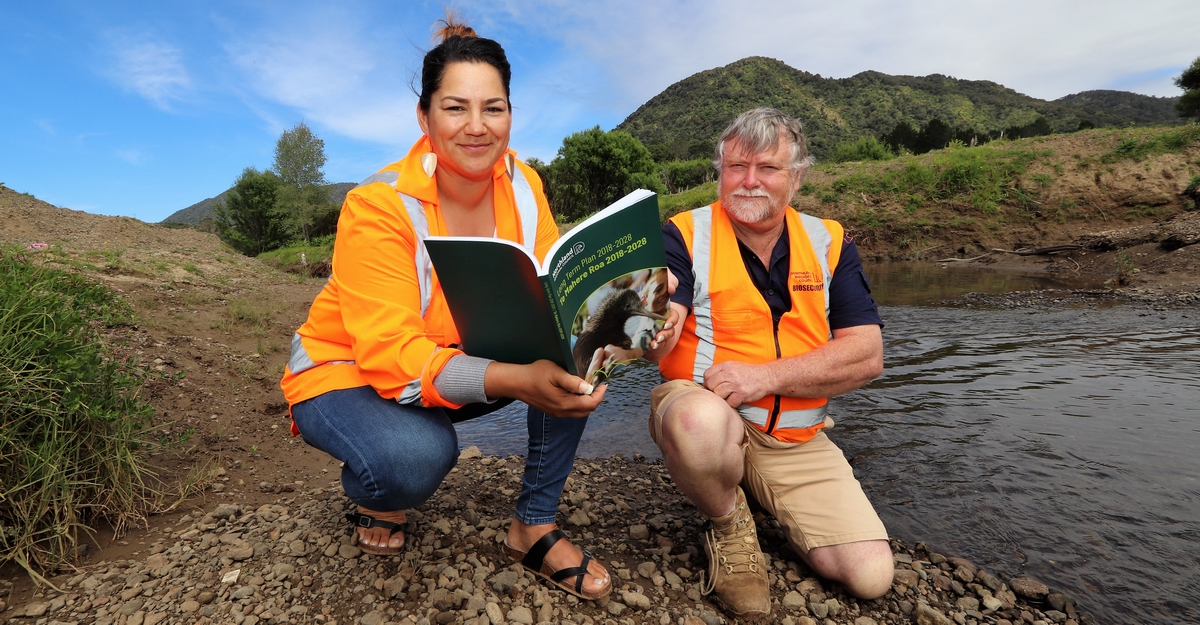Flood works should mean safer community, more school time
19 Dec 2018, 12:18 PM
Local authority river work is being credited for helping ensure Panguru schoolchildren were able to spend almost a fortnight extra at school this year.
Children in the remote Northern Hokianga area lost an incredible 26 days in 2017, unable to get through the floodwaters standing between them and the school. (The number of flood-related closures fell by almost half to 17 days this year, attributable to a combination of Northland Regional Council river works in the area last summer and more favourable weather.)
However, as well as the regular nuisance flooding of West Coast Rd – and the associated missing lessons for roughly 100 students at Te Kura Taumata o Panguru – ‘high intensity rainfall events’ pose a much bigger and more serious risk to the area.
Bruce Howse, the Northland Regional Council’s Group Manager - Environmental Services, says these include debris flow and debris floods which caused massive damage in the area in the late 1990s.
In June, this year a similar incident in the Gisborne area attracted national attention when an estimated one million tonnes of debris (much of it scrap timber, branches and off cuts left behind during forestry felling) swept onto properties near Tolaga Bay.
Mr Howse – who is also the NRC’s Deputy CEO – says the regional council had last summer already carried out a range of stream channel maintenance work, including vegetation clearance and gravel extraction which had resulted in a marked reduction in nuisance flooding and greatly improved access to the school.
However, during consultation on its new Long Term Plan earlier this year, regional councillors had also listened to public feedback on wider flooding issues experienced by the Panguru community, subsequently agreeing to fund various upcoming works that otherwise may never have happened.
The council’s working with its Far North District counterpart with a focus on West Coast Rd flooding. Options being considered in flood modelling include raising West Coast Road, culvert upgrades, changes to ground levels in the vicinity of Otengi Road, benching of the Whakarapa Stream floodway and cutting of a new flood overflow channel towards the harbour.
Once the modelling is complete, the outcomes will be presented to the community at a hui to be held in Waihou Marae on 28 February 2018. Provided a community consensus is achieved on the appropriate combination of options, the next phase would be to complete design and resource consents for the selected works.
As part of the regional council’s LTP consultation, Northland ratepayers gave their blessing to a multimillion dollar, decades-long investment that will see much-needed improvements to critical flood protection infrastructure across the region.
Mr Howse says Panguru will be an early beneficiary of the new scheme, where the full cost of its local flood works will be met via a new regional flood infrastructure rate (FIR) implemented through the LTP.
“Because the total value of this project is less than $500,000 and a targeted rate would raise less than $100,000 annually, it’s more cost-effective and efficient to simply fund all of the work for smaller – but locally important – projects like this from the FIR, rather than relying on a targeted local rate.”
Elsewhere in Northland – and for planned works above $500,000 – the NRC has implemented a 70/30 funding regime, under which the cost of 70% of the applicable flood work will be funded by ratepayers Northland-wide via the FIR, with only the remaining 30% needing to be met by the affected local community.
“The 70/30 scheme makes work much more affordable for smaller local communities and allows crucial work to start sooner rather than later.”
Mr Howse says by spreading the cost of 70 percent of an estimated $24 million of works planned Northland-wide across all its ratepayers over the next 60 years, these works will also be paid for the multiple generations that will benefit from them.
The split also reflects the broader regional benefits from having Northland’s main service hubs better protected from flooding.

Te Kura Taumata o Panguru board of trustees representative and local flood working party member Dallas Williams and regional council land management officer Doug Foster at Panguru where the council carried out various river works, including gravel and vegetation removal, last summer.
